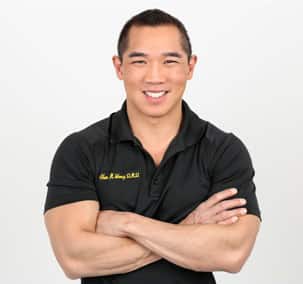What Are the Best Maintenance Practices After My Clear Aligner Treatment?
- January 9, 2023
- Posted by: Dr. Alan Wong
- Category: Modern Aligners
After your clear aligner treatment, you probably feel like you deserve a break for carefully following all the guidelines your orthodontist has given you. However, before you can call it a day, there are still a few maintenance steps to follow to ensure you get the most out of your treatment.
While your aftercare and maintenance is something your orthodontist will discuss with you specifically, the following practices are generally what you have to do so that your smile lasts.
What Is the Purpose of a Retainer?
The most significant part of maintenance after your clear aligner treatment is wearing a retainer. You’ll need to wear a retainer as your orthodontist recommends because it will prevent your teeth from shifting back to their previous locations. The retainer gives your teeth time to get used to their new, permanent locations.
Not wearing your retainer will increase the chances of your teeth shifting to a location that could be even worse than how your teeth looked initially, so be sure to wear them as your orthodontist recommends.
Do I Really Need a Retainer?
You might wonder if you can keep wearing your last treatment tray, and the answer is no. These trays are much more likely to be damaged compared to retainers that are custom-fitted and made to meet your current needs.
You might also need to wear your retainer differently over time. For example, some people only start wearing it at night. Many people begin wearing it throughout the day and gradually reduce how often they wear it. You may have to wear your retainers for life too, or maybe for only a few days each week. It will depend on your situation, so make sure to talk to your orthodontist.
Types of Retainers
If you’re worried about losing your retainer, there’s a type of retainer that you won’t lose: the fixed retainer. This is a thin, metal wire glued to the back of your teeth where your tongue is. It won’t get in the way of you eating, but it will stay there permanently—meaning that you can never lose it.
Many people get a removable retainer, which can come in a wire form or a clear tray. If you lose this retainer or notice it looking worn down, you should visit your orthodontist to get fitted for a new one.
How Do I Care For My Retainer?
Make sure to brush your retainer regularly and deep clean it every week in a retainer-cleaning solution.
You’ll still need to care for your permanent retainer too, if that’s what you have. This means brushing around the wire really well twice a day and flossing once a day. The wire can easily trap food, so keep an eye on it.
Eating Habits
You might be excited to eat certain foods now that you’ve finished your treatment, but your teeth will still be sensitive for a while. Refrain from eating anything too crunchy or chewy for at least a week. Remember: if you have a retainer in, you’ll need to take it out to eat anything.
General Dental Care
To keep your teeth healthy, the best thing you can do is to continue to brush and floss. Remember to remove your retainer to brush and floss your teeth properly.
Keep visiting your dentist and your orthodontist too. These are the professionals who can best update you about how your teeth are doing and whether you need any changes in your treatment.
Call Modern Orthodontics for Any Questions About Clear Aligner Treatment
You need to continue with maintenance care even after you have your clear aligners removed. This means wearing a retainer, being cautious of what you eat, and continuing to care for your teeth in general. You’ve put all this work into straightening your teeth so make sure that your results last!

Dr. Alan Wong is a dedicated orthodontist who loves helping his patients achieve healthy, beautiful smiles. He is committed to providing gentle, effective care in a patient-centered environment. Dr. Wong is also a strong believer in continuing education, so he can provide his patients with the latest and greatest treatment options.
